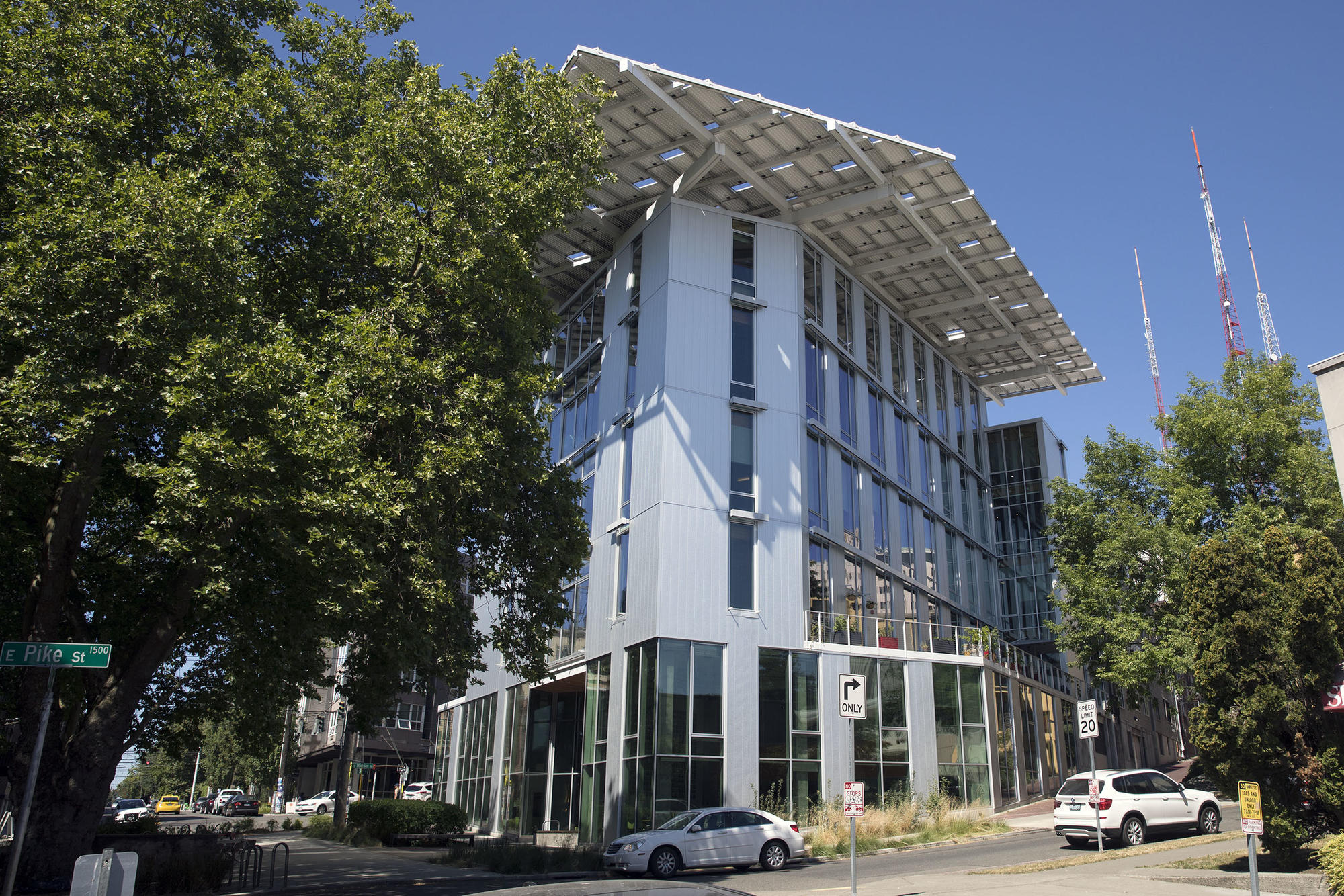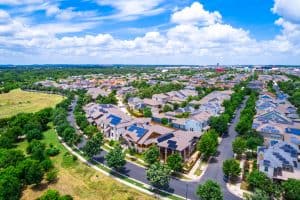Going GREEN
The Benefits and Barriers of Building Green
Written by Kiara
 “Going green” is one of the most laudable goals of our modern age; we must hit net zero emissions as quickly as possible. One way we can try to reach this goal is by building green.
“Going green” is one of the most laudable goals of our modern age; we must hit net zero emissions as quickly as possible. One way we can try to reach this goal is by building green.
There are a lot of different ways to build green, and a number of potential meanings behind the phrase “building green”.
One take on “building green” is to mean “building in a manner which reduces carbon consumption, and reduces greenhouse gas emissions (GHGs) from the actual construction process, as compared to traditional building design”.
Building green ultimately translates into building energy-efficient buildings that save on financial costs while protecting the environment. The end product of a sustainable building project - the creation of a green building - is the primary focus of this article.
Making Building Green a Reality
Creating Sustainable Building Projects
The most obvious benefit of building green is that it reduces carbon emissions and other GHGs. Building operations and building materials contribute almost 40% of global CO2 emissions. If building operations were sustainably managed, with a low carbon footprint, we could make substantial progress toward averting a climate disaster.
Optimally, building construction would be done without carbon-intensive materials or carbon emissions from start to finish. The need for concrete, heavy machinery, and other carbon-intensive building materials and construction equipment in many construction projects, however, limits our ability to create completely sustainable building projects. Please see this GCT green building article for ideas on how to reduce the carbon intensity of the actual process of constructing a green building.

The more readily attainable goal, other than creating projects with carbon-free construction operations, is the creation of green buildings themselves.
Among the most sustainable of these green building projects are buildings that generate enough renewable energy themselves to offset the carbon footprint of the building operation - zero net energy buildings.
Positive energy (also called plus-energy) buildings actually generate more renewable energy on-site than the building demands. The Bullitt Center Seattle is a good example of a building that can achieve positive energy status (given days with plentiful sunshine), and Vauban, Germany is a great example of a town comprised mostly of positive energy buildings.
See more on zero net energy buildings and plus-energy buildings in the GCT article on Vauban, as well as the article on the Bullitt Center Seattle
We must set our lofty aims at creating building projects with low carbon footprints overall. These types of fully sustainable projects are ones in which the initial carbon cost of construction/ building operations is offset by renewable energy generation, energy efficiency technologies, and other sustainable strategies used in order to lower the carbon footprint of building projects.
One strategy to lower a building's carbon footprint is by using heavy insulation, coupled with ventilation, in order to drastically reduce (or totally eliminate) the need for traditional HVAC. These sustainable building strategies are the cornerstone of passive house building techniques (along with air-tight construction focused on the use of lumber, double and triple-pane windows, and further implementation of other cutting-edge energy efficiency building strategies).
Heating and cooling are the primary energy costs for buildings around the world.
Heat pumps, cool roofs, as well as other green building strategies, are solutions to lower a building project's carbon footprint. Buildings should also be focused on the use of renewable energy sources, like solar, and geothermal when feasible. The use of energy-efficient appliances, such as Energy Star appliances, can also substantially reduce a building's carbon footprint, lower energy bills, and create energy savings.

This is, by no means, just an imagined utopian dream.
All new buildings can be designed to optimize the use of energy efficiency technologies and strategies. And even old buildings can be retrofitted with insulation, ventilation, heat pumps, and renewable energy sources in order to seriously limit (or even eliminate) their operational emissions.
Best of all, buildings with renewable energy assets can effectively reduce the carbon emissions of their neighbors (in certain circumstances with net metering. This can also be true of communities that invest in community solar projects). This is, in large part, because of green contributions to the electrical grid from their renewable sources.
If this seems utopian, remember: utopia means an imagined place in which everything is perfect. This is not a utopia in the traditional sense because it’s absolutely attainable. With appropriate incentives for sustainable building projects from governments and municipalities, we can live in a world like this.
Reduced Overhead Costs with Green Building
Electricity, heating, and cooling are all very expensive. When buildings are heavily insulated, traditional heating and cooling methods can be replaced with novel sustainable technologies - heat and energy recovery ventilation, coupled with heat pumps, can drastically lower a building’s overhead costs.
When these sustainable technologies are integrated with renewable energy generation, large-scale operations can actually make money by selling electricity back to the grid. This, however, is dependent on the willingness of municipalities/ utilities to buy that energy (the need for net metering in order for property owners to sell excess renewable energy back to the utility) - barriers we’ll address in the next section.
Creating A More Reliable (and Greener) Electrical Grid
Green buildings using renewables will often generate more electricity than they can use. When many buildings in a particular area use renewable energy themselves, the electrical grid becomes much more reliable. A diversity of energy sources is preferable - solar for days that are sunny, and geothermal generation for consistent reliability.
When coupled with power generation from the municipal grid (preferably from renewable sources rather than fossil fuel sources), there is a redundancy of energy sources in the community. This redundancy means that a failure in any one section of the grid is can be easily compensated for by a large amount of green, power-generating buildings.
For more ideas on sustainable, energy-efficient building operations and materials used in order to lower a building's carbon footprint, please see:
for more on passive building construction techniques, please see:
Vaxjo (Passive Building Construction Practices)
The barriers to building green
Higher upfront costs
Reduced overhead costs, when coupled with appropriate mechanisms to pay for power generation, can more than make up for the extra costs associated with building green. But there’s no getting around it - the initial costs of building green are higher.
This is a problem that will slowly solve itself. As more businesses and homeowners opt to build green, demand for green building materials and technology will increase. This will increase the scale at which these technologies are manufactured, and newer, more cost-effective methods of building these technologies will be developed.
We’ve already seen evidence of this with utility-scale solar photovoltaic panels, which are now the least expensive form of power generation on the planet (along with onshore wind energy). Demand soared, manufacturing soared, and now solar arrays are relatively inexpensive.
Of course, government incentives will be a huge boon when it comes to reducing upfront costs, and we hope that more governments will see the long-term value of green technologies.
Lack of knowledge
The second problem exists at both the commercial and residential levels - people simply don’t know that they can build green. While standards like passive house and LEED have existed for decades, it’s rare to find someone who knows what these standards mean. If you don’t know that you can build green, you’ll default to traditional construction.
Part of the goal of this site, and the network of green activists around the planet, is to raise awareness of green practices. While sustainable practices, like recycling, have caught on worldwide, green building still remains largely misunderstood and underutilized globally. Governments, construction companies, green activists, and other stakeholders should be shouting about green buildings from the mountaintops.
Lack of consistent government/utility incentives
This is perhaps the biggest barrier to green building - a lack of unified political will. Incentives are spread unevenly across federal, regional, and municipal levels. As different political powers take office, financial incentives (i.e. tax credits, renewable energy subsidies, etc...) for sustainable technologies and renewable energy can change rapidly. Additionally, some incentives (rebates, retail discounts, etc...) are in the hands of private utilities and energy companies, whose whims can change as quickly as their boards of directors.
The lack of consistency in incentives is what Horst Rittel and Melvin M. Webber would call a “wicked problem” - there’s no obvious solution, and any attempt to solve the problem leads to new, equally complicated problems.
Our focus as activists, then, should be on informing the general public and businesses about the benefits of green building, and to inform politicians and utilities, continuously, about these same benefits. We must believe that the obvious incentives of building green speak for themselves and that our efforts to keep everyone informed will greatly help create a better, healthier life for all.
Author's bio
Kiara is a part of the marketing team at Quik-Therm Insulation, a Canadian owned and operated development and design insulation technology company. Quik-Therm’s philosophy and passion is to create physics-based building envelope solutions that are environmentally responsible, require fewer components, install faster, and cost less.
Please see these articles on two cities employing passive building standards when constructing commercial buildings and residences in the city:
Vauban, Germany - The Greenest City in Europe
and
Fossil-free Vaxjo - Passivehouse construction standards
Please see the following articles on the latest green building and related energy efficiency technologies:
LEED - (Leadership in Energy and Environmental Design)
LEDs, CFLs: Lighting For a Brighter Future
Energy Star - an international standard
Demand response: improving energy efficiency
Smart meters - a more efficient use of utilities
Please click & read:
The Bullitt Center Seattle: The World’s Greenest Building